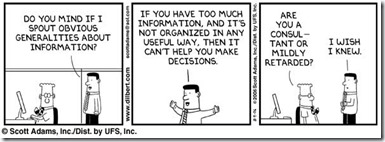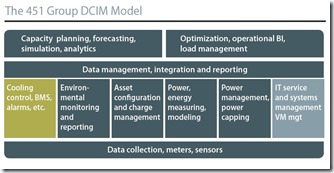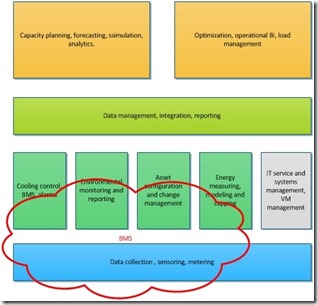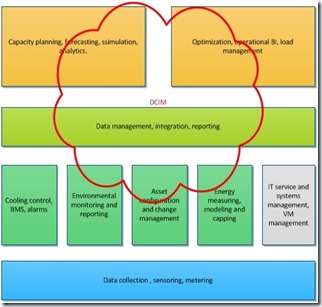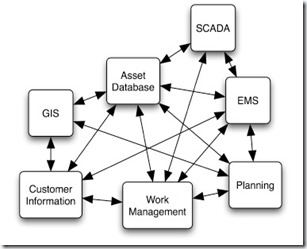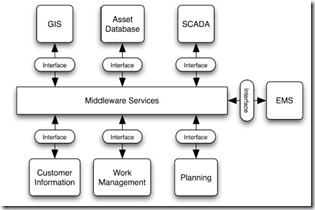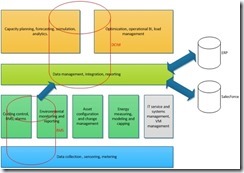DCIM–Its not about the tool; its about the implementation
<English cross post with my DCP blog>

So you just finished your extensive purchase process and now the DCIM DVD is on your desk.
Guess what; the real work just started…
The DCIM solution you bought is just a tool, implementing it will require change in your organization. Some of the change will be small; for example no longer having to manually put data in an Excel file but have it automated in the DCIM tool. Some of the change will be bigger like defining and implementing new processes and procedures in the organization. A good implementation will impact the way everyone works in your datacenter organization. The positive outcome of that impact is largely determined by the way you handle the implementation phase.
These are some of the most important parts you should consider during the implementation period:
Implementation team.
The implementation team should consist of at least:
- A project leader from the DCIM vendor (or partner).
- An internal project leader.
- DCIM experts from the DCIM vendor.
- Internal senior users.
(Some can be combined roles)
Some of the DCIM vendors will offer to guide the implementation process themselves others use third party partners.
During your purchase process its important to have the DCIM vendor explain in detail how they will handle the full implementation process. Who will be responsible for what part? What do they expect from your organization? How much time do they expect from your team? Do they have any reference projects (same size & complexity?)?
The DCIM vendor (or its implementation partner) will make implementation decisions during the project that will influence the way you work. These decisions will give you either great ease of working with the tool or day-to-day frustration. Its important that they understand your business and way of working. Not having any datacenter experience at all will not benefit your implementation process, so make sure they supply you with people that know datacenter basics and understand your (technical) language.
The internal senior users should be people that understand the basic datacenter parts (from a technical perspective) and really know the current internal processes. Ideal candidates are senior technicians, your quality manager, backoffice sales people (if you’re a co-lo) and site/operations managers.
The internal senior users also play an important role in the internal change process. They should be enthusiast early adapters who really want to lead the change and believe in the solution.
Training.
After you kicked off your implementation team, you should schedule training for your senior users and early adaptors first. Have them trained by the DCIM vendor. This can be done on dummy (fictive) data. This way your senior users can start thinking about the way the DCIM software should be used within your own organization. Include some Q&A and ‘play’ time at the end of the training. Having a sandbox installation of the DCIM software available for your senior users after the training also helps them to get more familiar with the tool and test some of their process ideas.
After you have done the loading of your actual data and you made your process decisions surrounding the DCIM tool, you can start training all your users.
Some of the DCIM vendors will tell you that training is not needed because their tool is so very user friendly. The software maybe user friendly but your users should still need to be trained on the specific usage of the tool within your own organization.
Have the DCIM vendor trainer team up with your senior users in the actual training. This way you can make the training specific for your implementation and have the senior users at hand to answer any organization specific questions.
The training of general users is an important part of the change and process implementation in your organization.
Take any feedback during the general training seriously. Provide the users with a sandbox installation of the software so they can try things without breaking your production installation and data. This will give you broad support for the new way of working.
Data import and migration.
Based on the advise in the first article , you will already have identified your current data sources.
During the implementation process the current data will need to be imported in to the DCIM data structure or integrated.
Before you import you will need to assess your data; are all the Excel, Visio and AutoCAD drawings accurate? Garbage import means garbage output in the DCIM tool.
Intelligent import procedures can help to clean your current data; connecting data sources and cross referencing them will show you the mismatches. For example: adding (DCIM) intelligence to importing multiple Excel sheets with fiber cables and then generating a report with fiber ports that have more than 1 cable connected to them (which would be impossible i.r.l ).
Your DCIM vendor or its partner should be able to facilitate the import. Make sure you cover this in the procurement negotiations; what kind of data formats can they import? Should you supply the data in a specific format?
This also brings us back to the basic datacenter knowledge of the DCIM vendor/partner. I have seen people import Excel lists of fiber cable and connect them to PDU’s… The DCIM vendor/partner should provide you a worry free import experience.
Create phases in the data import and have your (already trained) senior users preform acceptance tests. They know your datacenter layout and can check for inconsistencies.
Prepare to be flexible during the import; not everything can be modeled the way you want it in the software.
For example when I bought my first DCIM tool in 2006 they couldn’t model blade servers yet and we needed a work around for it. Make sure the workarounds are known and supported by the DCIM vendor; you don’t want to create all your workaround assets again when the software update finally arrives that supports the correct models. The DCIM vendor should be able to migrate this for you.
Integration.
The first article did a drill down of the importance of integration. Make sure your DCIM vendor can accommodate your integration wishes.
Integration can be very complex and mess-up your data (or worse) if not done correctly. Test extensively, on non-production data, before you go live with integration connections.
The integration part of the implementation process is very suitable for a phased approach. You don’t need all the integrations on day one of the implementation.
Involve IT Information architects if you have them within your company and make sure external vendors of the affected systems are connected to the project.
Roadmap and influence.
Ask for a software development roadmap and make sure your wishes are included before you buy. The roadmap should show you when new features will be available in the next major release of you
r DCIM tool.
The DCIM vendor should also provide you with a release cycle displaying the scheduled minor releases with bug fixes. When you receive a new release it should include release-notes mentioning the specific bugs that are fixed and the new features included in that new release. Ask the DCIM vendor for an example of the roadmap and release-notes.
During the purchase process you may have certain feature requests that the vendor is not able to fulfill yet. Especially new technology, like the blade server example I used earlier, will take some time to appear in the DCIM software release. This is not a big problem as long as the DCIM vendor is able to model it within reasonable time.
One way to handle missing features is to make sure it’s on the software development roadmap and make the delivery schedule part of your purchase agreement.
After you signed the purchase order your influence on the roadmap will become smaller. They will tell you it doesn’t… but it does… Urge your DCIM vendor to start a user-group. This group should be fully facilitated by the vendor and provide valuable input for the roadmap and the future of the DCIM tool. A strong user-group can be of great value to the DCIM vendor AND its customers.
Got any questions on real world DCIM ? Please post them on the Datacenter Pulse network: http://www.linkedin.com/groups?gid=841187 (members only)
